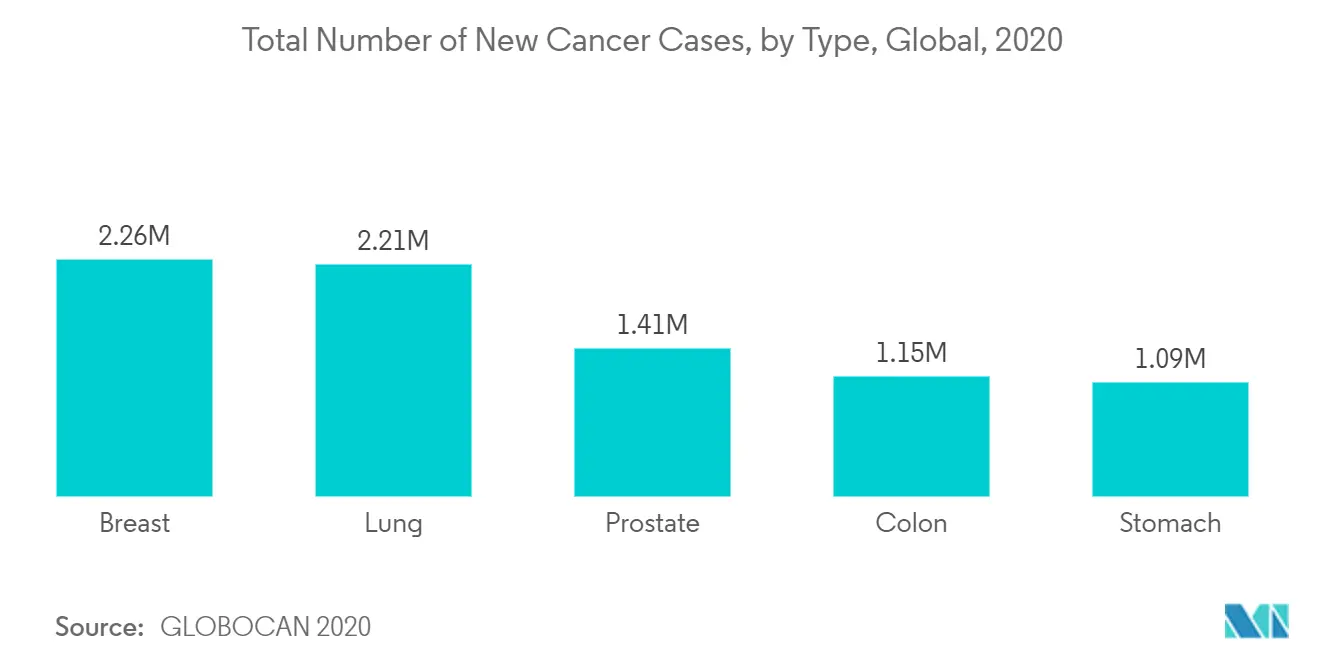Market Trends of Global Aptamers Industry
This section covers the major market trends shaping the Aptamers Market according to our research experts:
Diagnostics Segment is Expected to Witness a Healthy Growth Rate Over the Forecast Period
Appropriate diagnosis is the most crucial factor for the treatment of diseases, especially viral diseases. Over the past few years, aptamer technology has observed a significant rise in its demand and usage all across the world. It has been used in a wide range of diagnostic as well as therapeutic applications, and several strategies are currently being explored, in a definitive or conclusive way, using aptamers against virus proteins.
The outbreak of COVID-19 and lack of specific treatment and gold-standard diagnostic system for diagnosis has made the situation more complicated. Efforts have led to the production of several diagnostic kits that are associated with limitations such as accuracy and inadequate sensitivity. Aptamers are considered as multipotent biological probes that could be promising candidates to design sensitive and specific biosensors. Moreover, few studies have introduced specific aptamer types of coronavirus, that may help to select the best approach to obtain specific aptamers for the SARS-CoV-2 virus. For instance, according to a research study by Raheleh Torabi et al., published in Molecular and Cellular Probes Journal, October 2020, the study results found that helicase enzyme has an important role in viral replication and proliferation. Therefore, it could be considered as a potent target to develop the coronavirus therapeutic aptamers. N protein could be also a potent target to detect and inhibit COVID-19 due to its crucial role in the synthesis of viral RNA and SARS detection. By applying aptamers as sensitive diagnostic elements, it will be able to fabricate rapid, sensitive, low-cost, and user-friendly diagnostic tools of small volume clinical samples.
In addition, according to a research study by Sapna Devi et al., published in Saudi Journal of Biological Sciences May 2021, Aptamer (oligonucleotide or short peptides) that can specifically bind to target molecules have increasingly become popular in developing biosensors for sensitive detection of analytes, pathogens (bacteria, virus, fungus, prions), drug residues, toxins, and cancerous cells. Thus, aptamers were found to be successful in in-vivo application in disease diagnosis. From a diagnostic point of view, aptamers are presently being designed as a bio-recognition element in a variety of diagnostic systems to detect viral proteins, either in the blood (serum or plasma) or the infected cells.
The market players are adopting various strategies such as product launches, developments. collaborations, partnerships, and expansions to increase market share. For instance, in September 2020, Aptamer Group and Cytiva entered into a new collaboration agreement to produce a rapid test for the COVID-19 infection. In addition, in June 2020, in South Korea, Aptamer Sciences Inc., launched a non-small cell lung cancer risk test which is the world's first diagnostic kit to apply aptamer technology, and it is expected to help increase the rate of an early lung cancer diagnosis with convenience and high accuracy. Hence, the above-mentioned factors are expected to drive the segment growth over the forecast period.

North America Dominates the Market and Expected to do Same in the Forecast Period
The North American region dominates the aptamers market due to rapid technological advancements and high investment and funding to support the development of aptamers. The United States has been the hub of all major R and D activities related to aptamers. The first aptamer therapeutic product ''Macugen'' was approved in 2004 by the US FDA (United States Food and Drugs Administration).
Aptamers, explicitly synthesized for the nucleocapsid protein of SARS-CoV-2, are deployed and provide a rapid result. No refrigeration or preparation of the sample is required. The nanosensor-based assay will be able to detect COVID-19 in both symptomatic and asymptomatic cases accurately and distinguish the novel coronavirus from influenza and other common respiratory pathogens. According to a Canadian research study by Jiuxing Li et al., published in Nucleic Acids Research Journal, June 2021, the study results found that aptamers maintained full binding activity with the S1 protein spiked into 50% human saliva, which could support home-testing or rapid testing in congregate settings. Based on this finding, developed a simple colorimetric sandwich assay using the MSA1 aptamer as an molecular recognition elements (MRE) and showed that it was capable of detecting pseudotyped lentivirus in 50% saliva with a limit of detection of 400 fM. The study has confirmed the potential of the aptamers as diagnostic tools for COVID-19 detection in an easily accessed patient sample.
In the North America region, research and development happens to be the most active area of application of aptamers. A significant proportion of demand is seen in research applications, which is also responsible for generating revenues in the market. Furthermore, the growing acceptance of personalized medicine is also one of the major factors driving the growth of the market. Aptamers have evolved rapidly in the past ten years, and aptamers have targeted a range of molecules involved in tumor progression and metastasis, present at different sites. In March 2021, in United States, Eastern Virginia Medical School initiated a phase I clinical trial to determine whether a tenofovir (TFV) aptamer-based biosensor (aptasensor) can detect TFV in biological fluids from women randomized to different dosing regimens representing high and low adherence. The trial is expected to complete in January 2022. Hence, owing to above mentioned factors, the market is expected to grow over the forecast period in the region.


